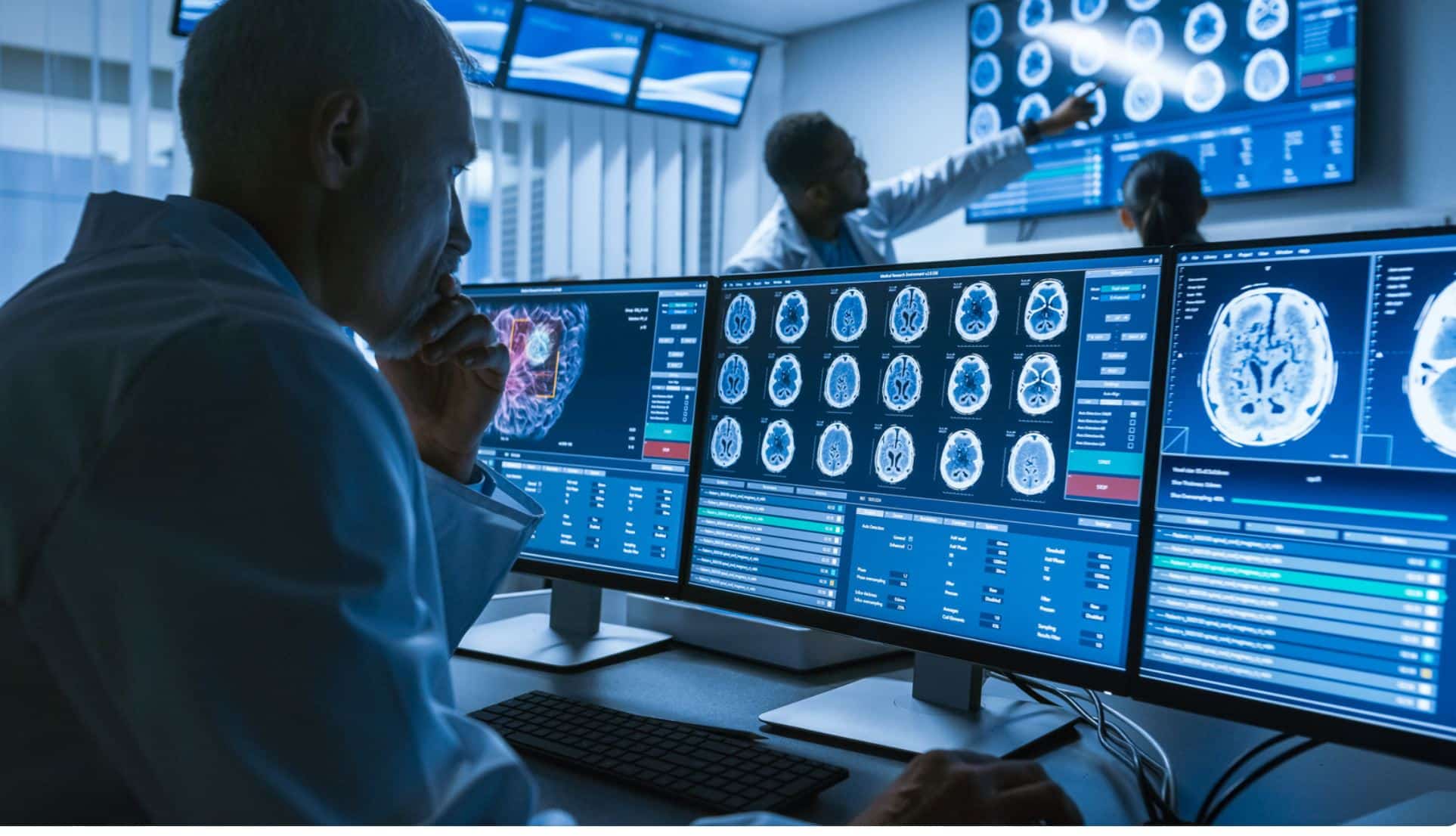
May 30, 2024 – Katherine Wandersee
Conferences : Consortium of Multiple Sclerosis Centers Annual Meeting (CMSC)
CMSC Kurtzke Lecturer Darin Okuda, MD, demonstrates innovative ways to rethink MRI use in MS.

MRI is still the standard of care for following MS disease activity in the inflammatory stages. However, the human eye is easily fooled when attempting to interpret changes in white matter lesions using 2-dimensional (2D) MRI images, said Darin Okuda, MD, professor of neurology and director of the Neuroinnovation Program at the University of Texas Southwestern Medical Center, in Dallas. In the opening John. F. Kurtzke Lecture of the Consortium of Multiple Sclerosis Centers (CMSC) 2024 annual meeting, Okuda showed the audience how 3-dimensional (3D) models, AI-assisted interpretation, and even completely novel methods like applying color and sound, can take MRI visualization of the brain to the next level.
Radiologically Isolated Syndrome: MS in its Embryonic Stages
It’s often said that white matter changes on MRI show us the tip of the iceberg in MS but not what’s lying underneath. Okuda, the neurologist credited with first identifying radiologically isolated syndrome (RIS), described 3 scenarios for the initial onset of the disease, before the appearance of any clinical symptoms.
- A person is exposed to an agent that alters their immune system and causes microscopic injury, but it remains below the resolution of what can currently be captured on imaging. “Tissue injury is present, but the person does not have obvious lesions and never manifests with MS as we currently understand it,” Okuda said. This category is somewhat controversial, Okuda commented, because it suggests that the prevalence of a low-lying MS may be much higher than is currently recognized.
- A person is exposed to Epstein-Barr virus or other environmental triggers but never develops any autoimmune-mediated neurologic injury.
- The person develops RIS, which later manifests into MS. Much can be learned from this stage, Okuda noted. Members of an international consortium on RIS are analyzing MRI scans taken prior to the appearance of any identifiable MS lesions, in an effort to pinpoint what might have happened in the brain in this embryonic stage of MS.
Hidden in Plain Sight: What 2D MRI Doesn’t Show Us
One reason that MRI is so fraught with problems is based on the imperfect way the human eye interprets the world, Okuda noted. “Our eyes love to create right angles,” he said. “This may have helped our primitive ancestors to avoid threats, but it’s not helpful for interpreting MRI images with any precision.” In a study submitted for publication, Okuda’s lab analyzed more than 1500 lesions from 115 patients at 3 time points. Although the lesions looked unchanged to the naked eye on 2D MRI, advanced 3D methods showed an average 60% change in the lesions between time points 1 and 2, and 50% change from time points 2 to 3. In some cases the lesions changed position or even decreased in size. “This is the kind of information we would want to share with our patients,” he said.
Taking the Boredom Out of MRI Images
Click here to continue reading
Stay informed with MS news and information - Sign-up here
For MS patients, caregivers or clinicians, Care to chat about MS? Join Our online COMMUNITY CHAT



